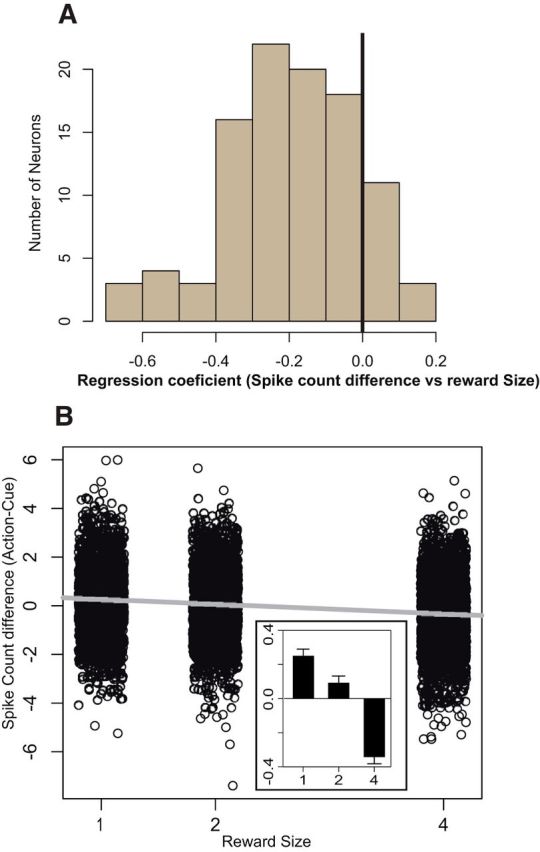Figure 7.

Within-trial dynamics of reward sensitivity. A, Distribution of the reward modulation of spike count difference between cue and action across all neurons. The regression coefficient of spike count difference (action-cue) as a function of reward size was estimated for each LC unit. The distribution is clearly shifted to the left (mean ± SEM, −0.2 ± 0.02; significantly different from 0, t(99) = −11.5, p < 10−10). In addition, this negative relation between expected reward and spike count difference was significant for 42 units, and none showed a significant positive correlation. Thus, LC neurons show a homogenous tendency to have a reward-dependent modulation of firing between the onset of the cue and the triggering of the behavioral response. B, Influence of the expected reward size on the spike count difference between cue and action initiation-related activity for each neuron, on a trial-by-trial basis. The expected reward has a significant negative influence on that difference (β = −0.2, r2 = 0.03, p < 10−10). The inset shows the mean values of these differences across the three reward sizes. The spike count difference showed a significant effect of reward size in a one-way ANOVA, after removing the between-subject effects (F(1) = 0.2, p = 0.8; F(2) = 87.9, p < 10−10). For small rewards, the activity increases between cue onset and action initiation. For large rewards, the activity decreases between cue and action.
